Picture Perfect: Rare color photographs of Don Larsen's World Series perfect game

Like the game itself, the images of Don Larsen’s World Series perfect game on Oct. 8, 1956 are iconic—and in black and white. The photographs of Larsen’s last pitch and Yogi Berra’s joyous leap into his arms, and even the 2008 discovery of the kinescope of the actual NBC game telecast are eternal, but eternally monochromatic.
But there are color photographs of the only perfect game in World Series history, a 2-0 Yankees win that gave them a 3-2 series lead over the Dodgers.
In 1999 an unidentified woman walked into the conference room of a Florida hotel answering a newspaper advertisement from a memorabilia dealer. She brought her late husband's 1956 World Series Game 5 ticket stub and program (incongruously autographed by Ed Sullivan). And, almost as an afterthought, she said she had a box of color slides he’d taken that day while trying out his brand new color camera.
The treasures were the program and stub, each quickly sold to eager collectors. The slides? The dealer and a colleague made a stack of prints from a couple of them, and paid Larsen to sign them. They didn’t sell well. I bought the slides five years ago intending to do something like this with them.
The problem was that even though the slides showed Larsen’s masterpiece in color, they really didn’t seem to show much of it. The photographer had no particular skill, he had already used up one frame on a nighttime picture of Times Square, nine more on pre-game moments, and on one occasion he failed to manually advance the roll, producing a ghostly double image.
SI VAULT: Don Larsen, 50 years after he was perfect (July 3-10, 2006)
Most importantly he didn’t have anything resembling a long lens. Shooting at a distance of more than 400 feet from the batter’s box, his Don Larsen is a discernible but indistinct figure in the shadowy distance. To his credit he captures a decent image of Mickey Mantle, back to the camera, head tilted obligingly to the left, hands on hips awaiting play to resume. Careful study proves he clicked his shutter just as one of the only two runs scored, on Hank Bauer’s RBI single in the sixth inning. A magnifying glass even shows Jackie Robinson in the Dodger infield during the game, and Sandy Koufax running in the outfield before it started.
The Only Known Color Photos of the Only Perfect Game in World Series History
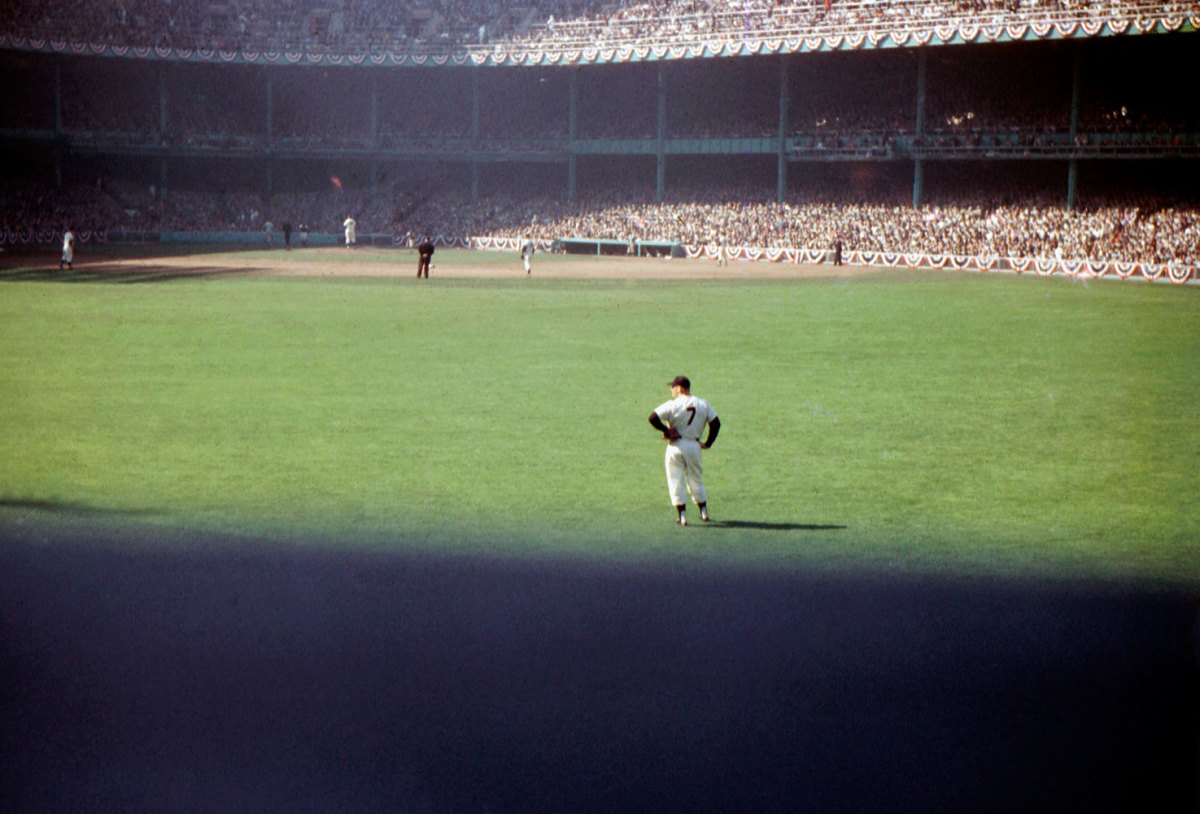
Mickey Mantle patrols centerfield. Mantle, the Triple Crown and AL MVP winner that year, was the other star for the Yankees that day. His fourth-inning home run gave Larsen the only run he would need, and Mantle preserved the perfect game one inning later with a running catch on a Gil Hodges fly ball to the gap.
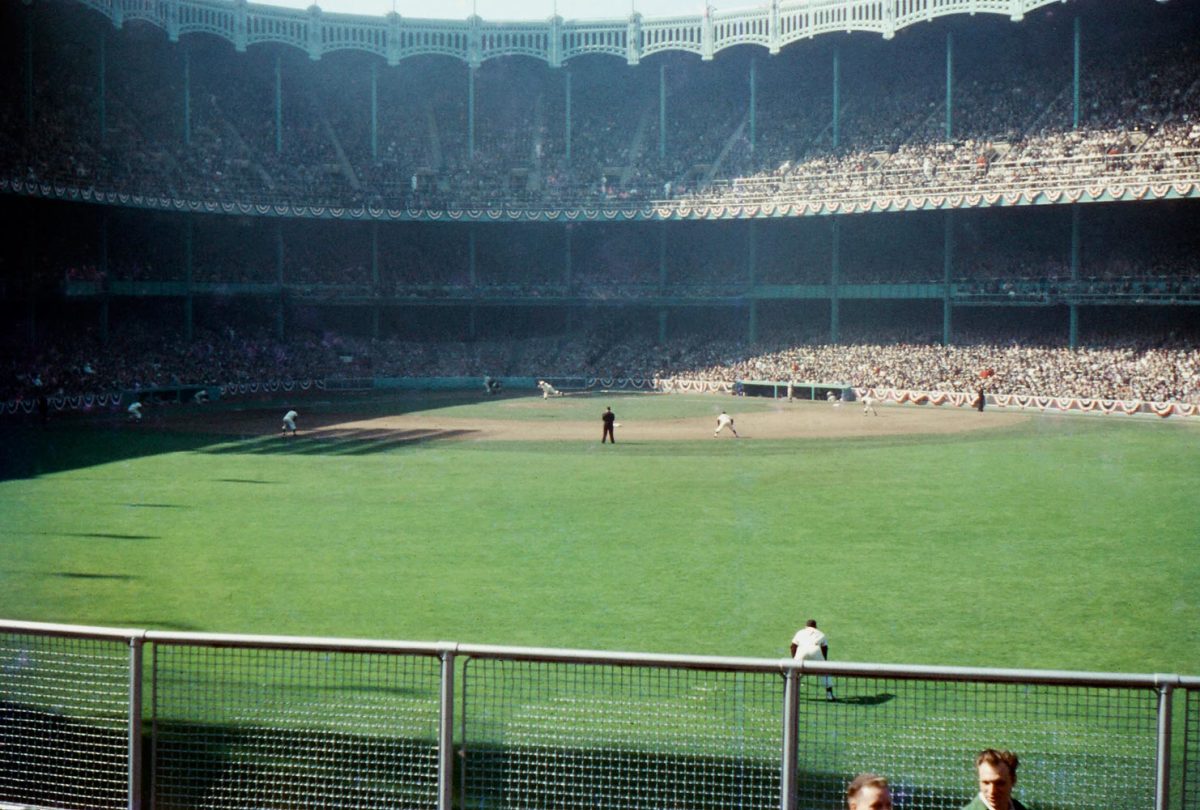
The view from the outfield seats. Also sitting in the outfield stands that day: future Yankees and Dodgers manager Joe Torre.
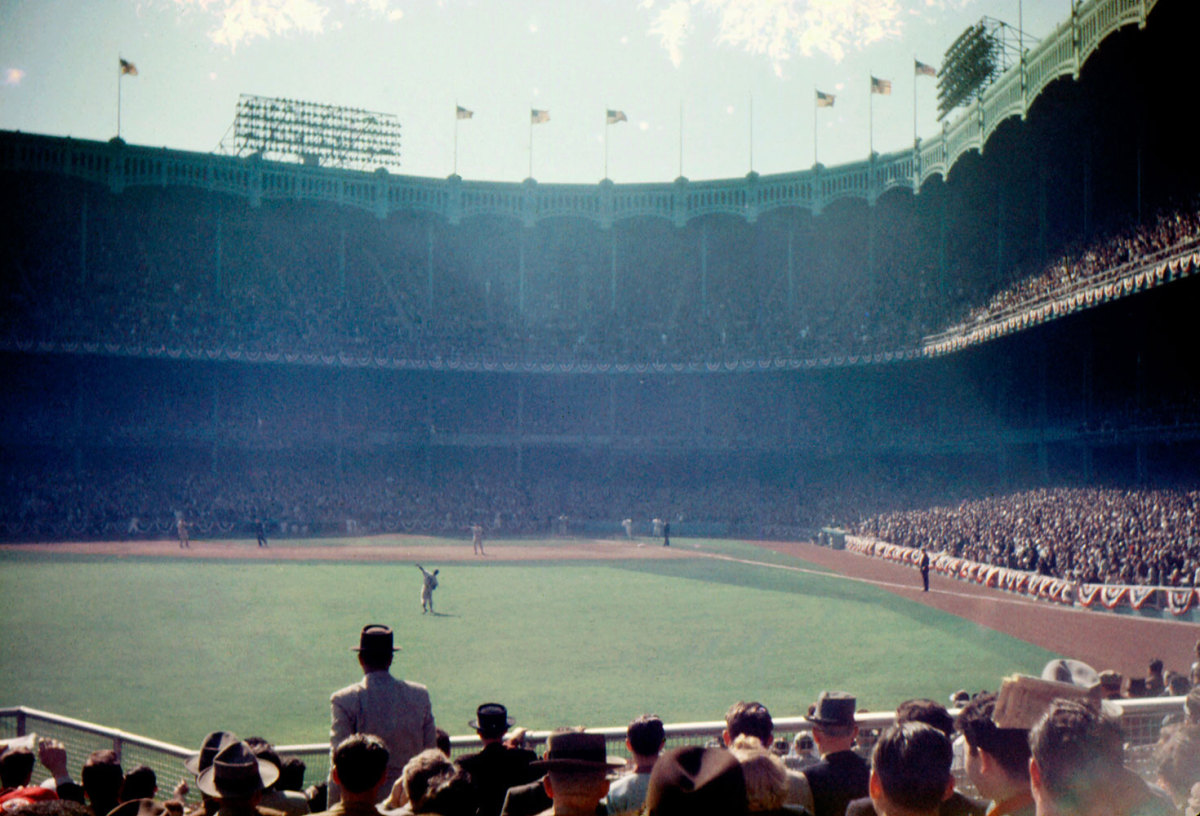
The view from the left field stands.
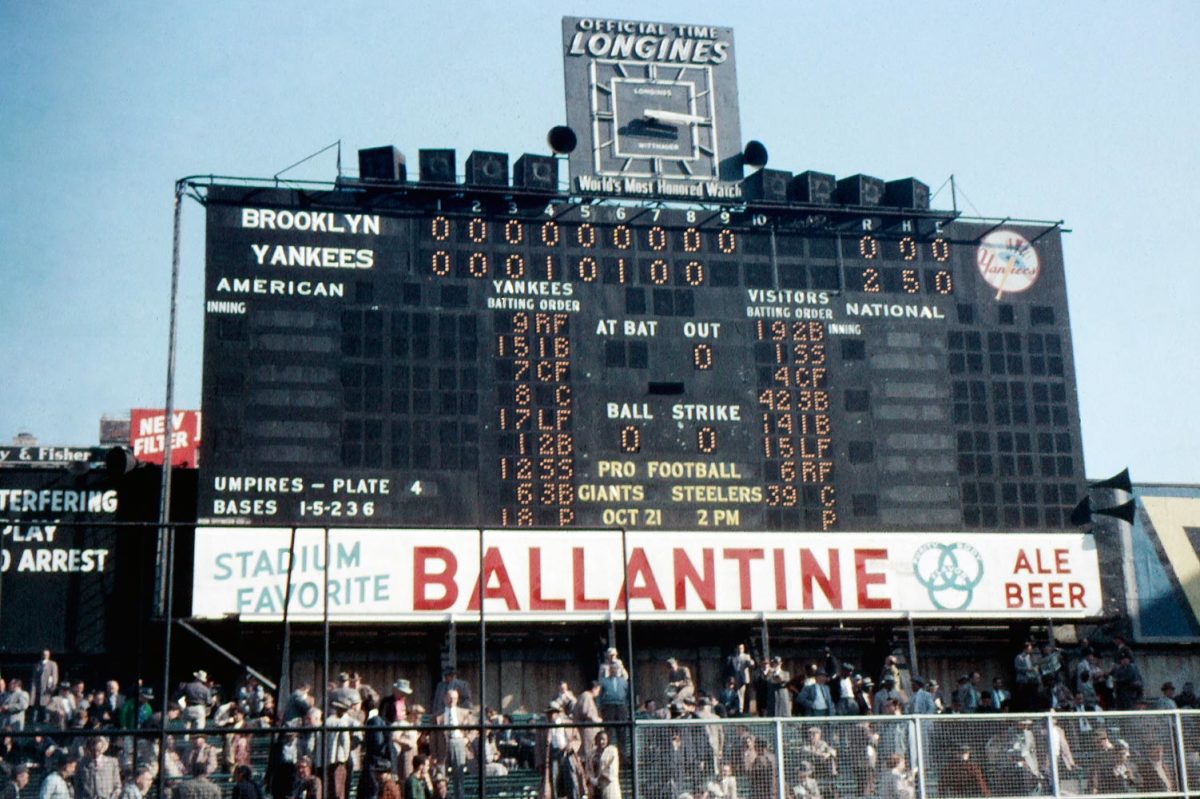
The old Yankee Stadium scoreboard shows the linescore: no runs, no hits and no errors for the Dodgers, two runs, five hits and no errors for the Yankees
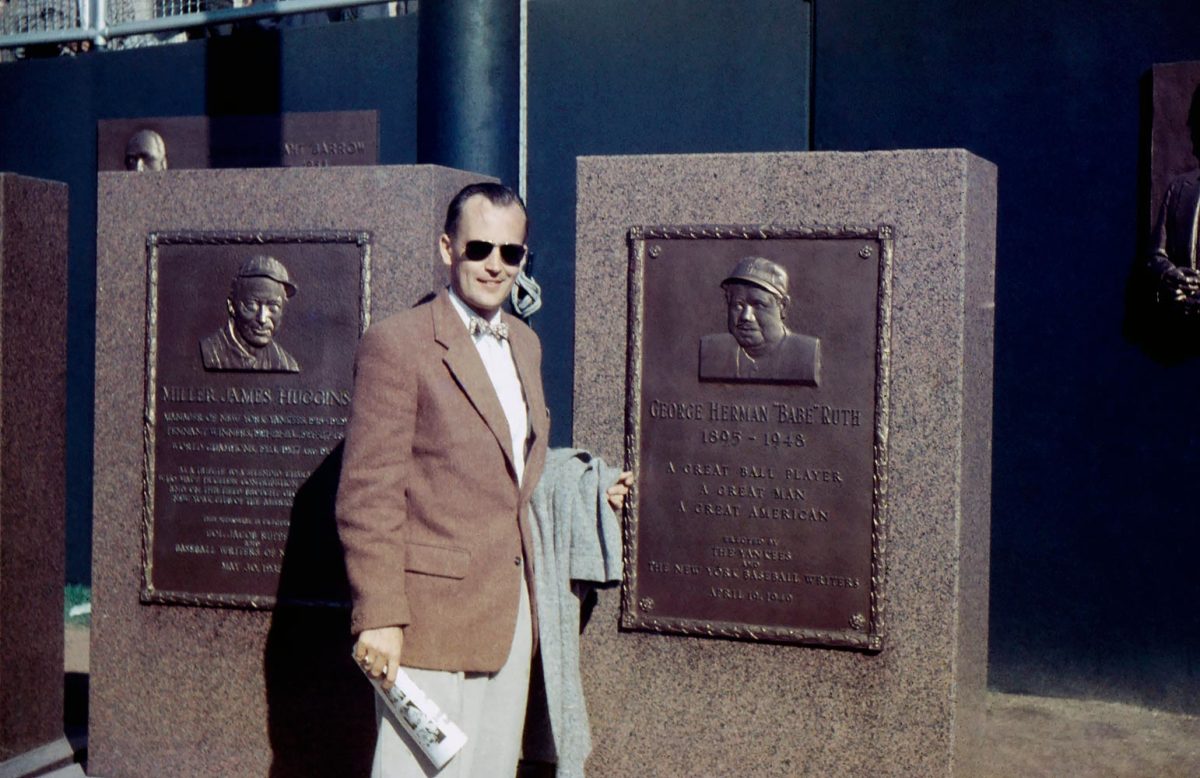
Fans used to exit Yankee Stadium by way of the field, where they would pass by the three monuments—to former manager Miller Huggins, first baseman Lou Gehrig and, of course, Babe Ruth—that were actually on the field of play in front of the centerfield flagpole.
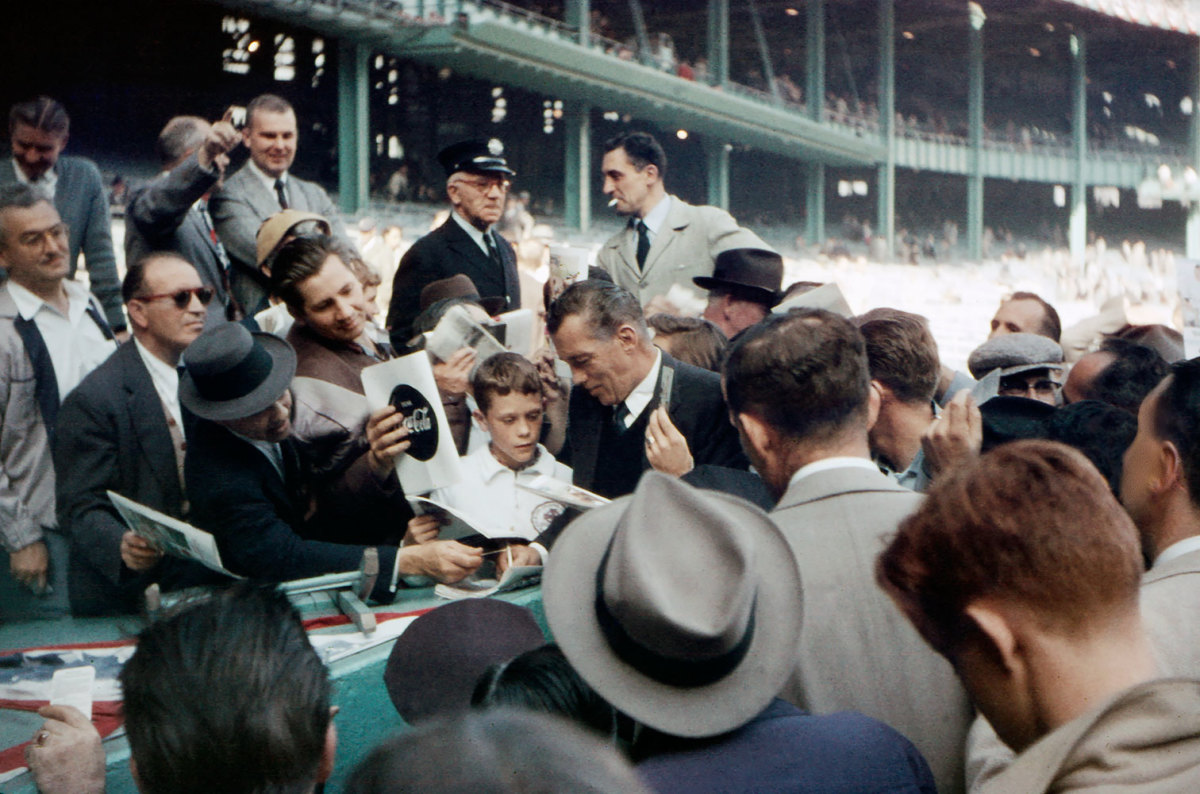
Famed TV host Ed Sullivan signs autographs for the fans at Yankee Stadium.
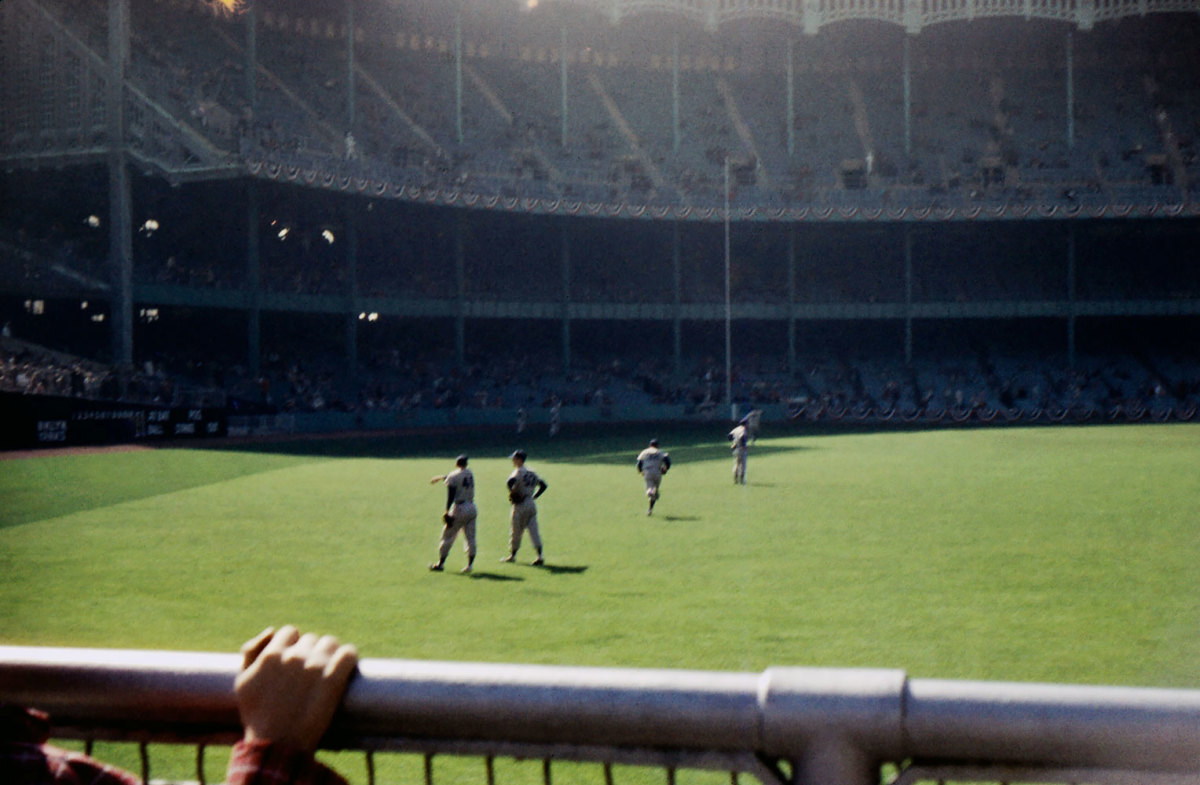
The Dodgers prepare for the game. Number 32 is future Hall of Famer Sandy Koufax.
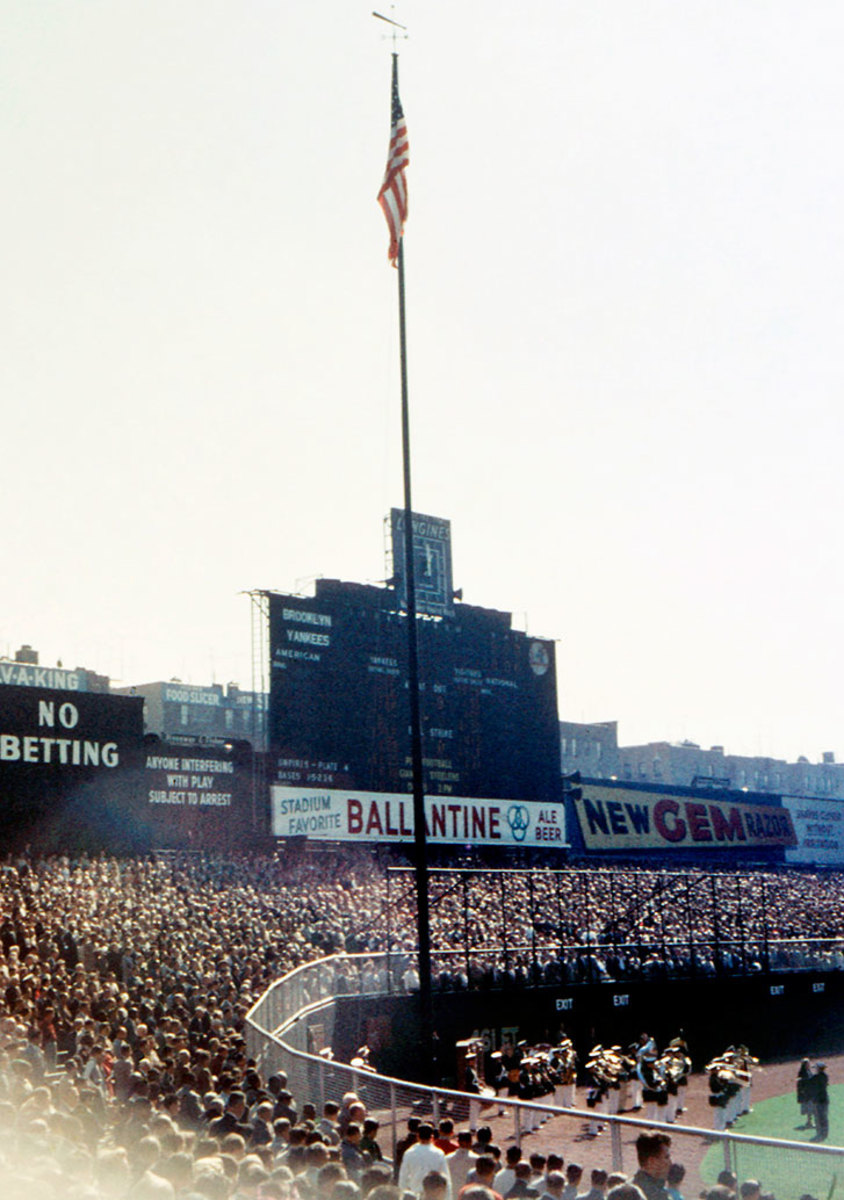
The American flag on a beautiful early fall day in the Bronx. The game took 2:06 and was attended by more than 64,000 fans.
But while he had six pictures left to take as Larsen completed history, he used none of them on the last pitch, nor Berra’s leap, nor his teammates congratulating Larsen. He saved these slides for two shots of the scoreboard, two of the monuments the fans could then inspect as they filed out of Yankee Stadium via the field, and two more of Ed Sullivan signing those autographs.
Yet for all his failings, the anonymous fan with the new camera served history surprisingly well: His presence, and two of the pictures he took, help explain how on earth Larsen did it. During the anthem and the flag-waving, he captured where the batters’ eye should have been—but wasn’t. When the telecast was unearthed, historians were shocked to hear Mel Allen ask that a camera be trained on the stands in right-centerfield. The crush of fans wanting to get in was so great, he explained, that the Yankees had found space for them by removing the batters’ eye. No batters’ eye? It’s less amazing that Larsen, with his atypical delivery, pitched a perfect game than it is that Brooklyn's Sal Maglie didn’t throw one as well.
The photographer also gives us what the professionals did not: the verdant green and smoky glare of the ballpark on a perfect October afternoon 60 years ago, a literal hazy new peek backward in time. Somewhere in that fuzzy distance of the stands is 16-year old Joe Torre. Somewhere in the almost imperceptible press box is 28-year old Vin Scully, calling the action alongside Allen. And this is to say nothing of the hope our fan-with-camera gave us that somewhere there is another small box full of color pictures taken by another fan in that crowd—hopefully one who had better seats.
